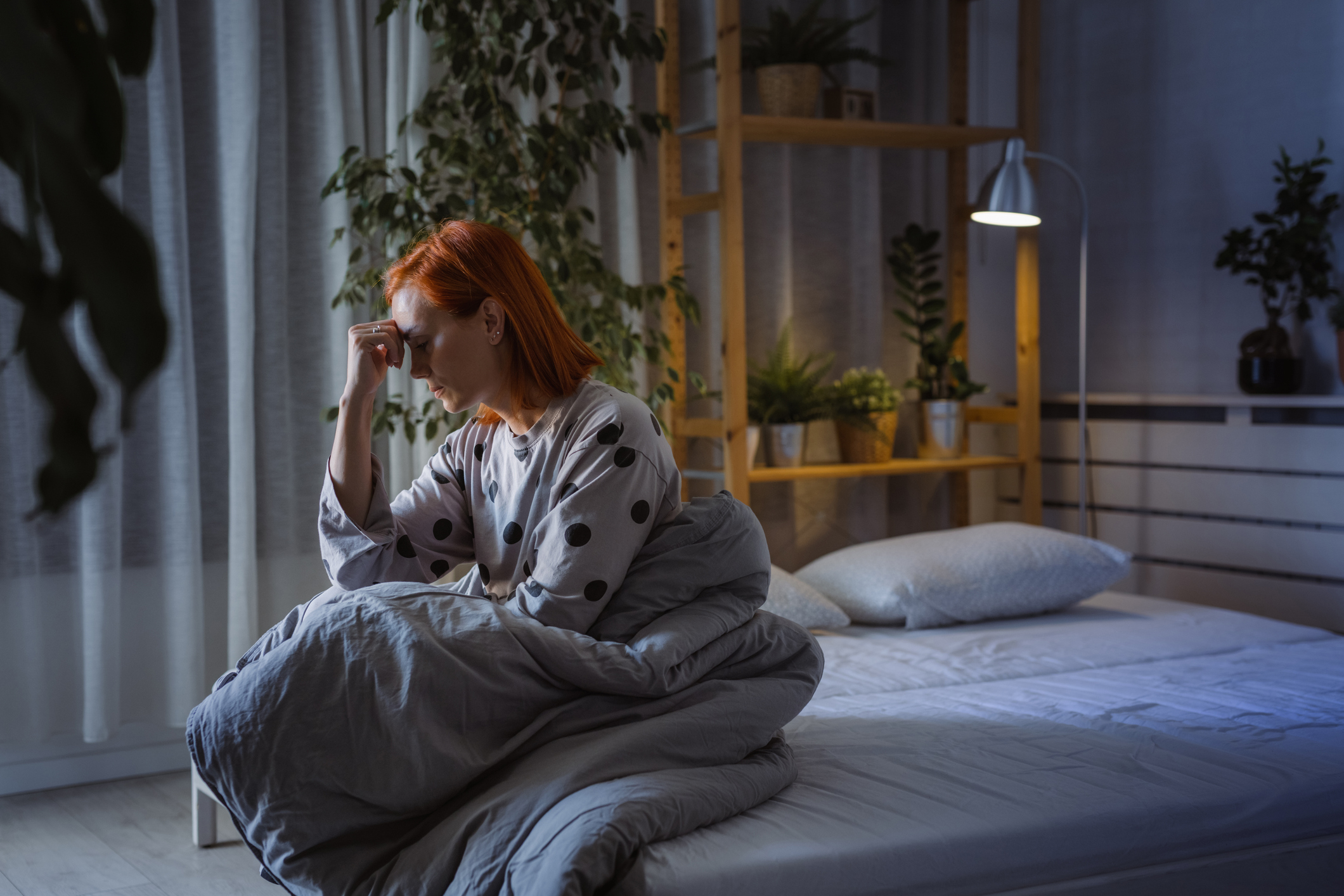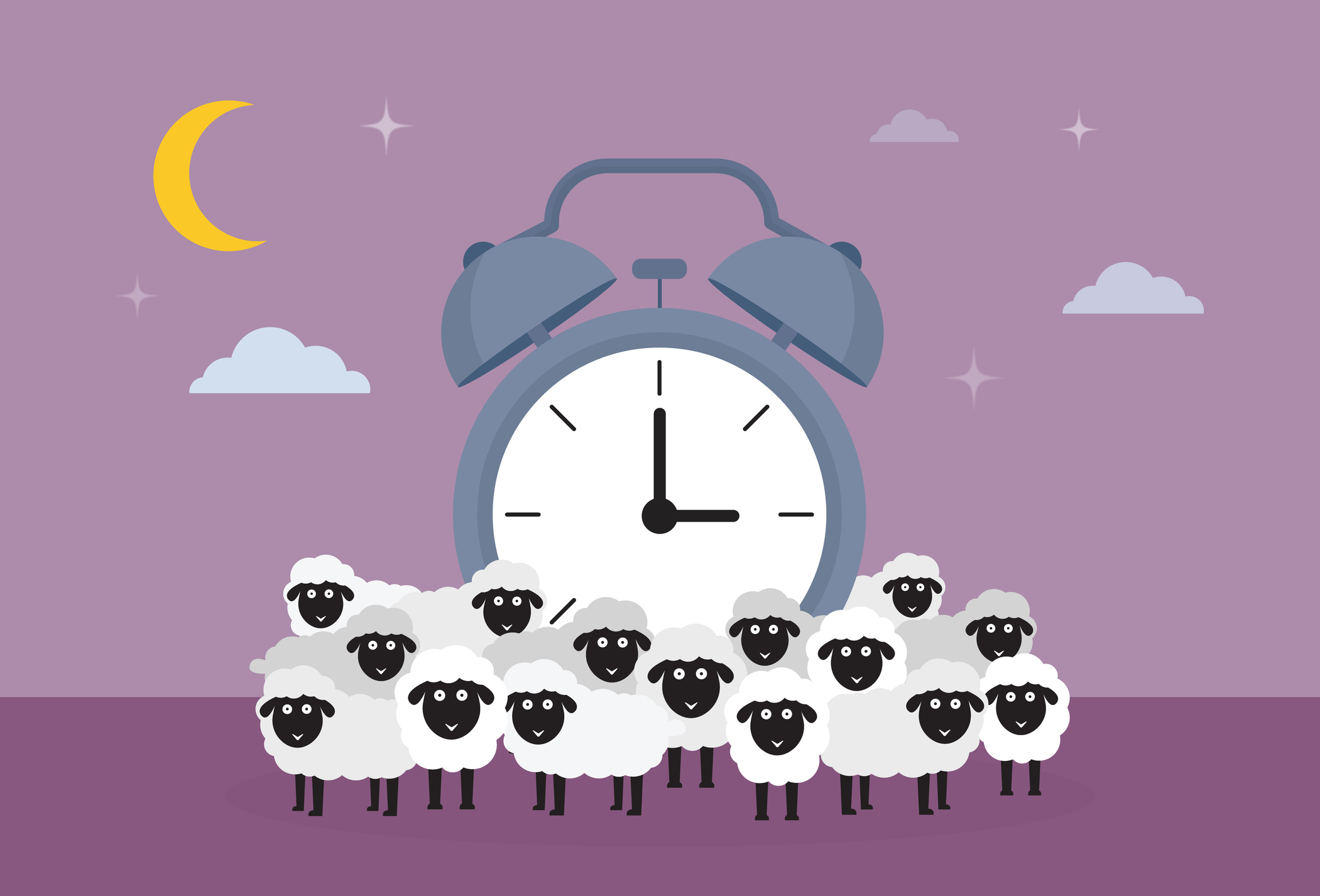Insomnia
September 22, 2025
Insomnia: What You Need to Know for Better Sleep
Insomnia can silently erode health and quality of life, often long before it is formally diagnosed. It is one of the most common sleep complaints worldwide, affecting people of all ages and backgrounds.
Poor sleep caused by insomnia disrupts the brain’s ability to process information, weakens the immune system, and heightens the risk of chronic conditions such as hypertension and depression.
The constant lack of restorative rest can make everyday tasks harder, strain relationships, and reduce resilience to stress. Early action can protect both mental and physical well-being.
What Exactly Is Insomnia?
Insomnia is a persistent difficulty falling asleep, staying asleep, or achieving restorative sleep, even when you have the opportunity to rest. It is classified as a sleep disorder when it affects daytime functioning, such as mood, concentration, and energy levels.
Clinically, insomnia can be short-term, lasting a few days to weeks, or chronic, lasting at least three nights a week for three months or longer. Acute insomnia often arises from temporary stress, travel, or illness.
Chronic insomnia is typically linked to deeper issues, such as ongoing health conditions or behavioral patterns that disrupt sleep (1). The American Academy of Sleep Medicine recognizes insomnia as one of the most common sleep complaints (2). Insomnia impairs immune function, alters hormone regulation, and strains the heart and circulatory system.
How Common Is Insomnia?
Insomnia affects an estimated 10% of the adult population on a chronic basis, according to epidemiological studies (3). Up to 20% report short-term insomnia symptoms (4).
Women are about 40% more likely than men to experience insomnia, due in part to hormonal fluctuations during menstruation, pregnancy, and menopause (5).
The prevalence increases with age, with older adults often facing contributing factors such as medical illness, medication side effects, and changes in circadian rhythm.
The U.S. Centers for Disease Control and Prevention has identified insufficient sleep as a public health concern, given the high percentage of adults who report trouble sleeping multiple nights per week (6).
Insomnia is also more common in people with mental health disorders, with studies showing that patients with depression or anxiety also experience chronic insomnia (7).
What Causes Insomnia?
Insomnia rarely stems from a single cause. Instead, it often results from an interaction of biological, psychological, and environmental factors.
Common causes include:
- Stress and anxiety – Work deadlines, financial concerns, or personal problems can lead to a heightened stress response at night, making it harder for the brain to transition into a sleep-ready state.
- Poor sleep habits – Inconsistent bedtimes, frequent napping, late-night use of electronics, and irregular exposure to daylight can confuse the body’s circadian rhythm.
- Medical conditions – Chronic pain, asthma, gastroesophageal reflux disease (GERD), cardiovascular disease, and neurological disorders can make sleep difficult.
- Mental health disorders – Depression, anxiety, bipolar disorder, and PTSD are strongly linked to insomnia.
- Medications and substances – Certain antidepressants, corticosteroids, stimulants, caffeine, nicotine, and alcohol can interfere with sleep quality.
- Hormonal changes – Pregnancy, menopause, and thyroid disorders can influence sleep patterns.
- Environmental factors – Noise, light pollution, uncomfortable room temperature, or frequent nighttime disturbances can prevent continuous sleep.
The longer insomnia persists, the more it can become self-sustaining. People often develop anxiety about sleep itself, creating a cycle where the fear of sleeplessness becomes part of the problem.

How Does Insomnia Affect the Body and Mind?
Sleep is essential for recovery, learning, memory consolidation, and the regulation of hormones. Chronic insomnia disrupts these functions, triggering wide-reaching effects on both physical and mental health.
Physical effects:
- Increased blood pressure and heart rate due to prolonged activation of the stress-response system
- Higher risk of developing cardiovascular disease, stroke, and metabolic disorders such as type 2 diabetes
- Reduced immune function, making the body more susceptible to infections
- Hormonal imbalances that affect appetite regulation, potentially leading to weight gain
- Increased inflammation, which contributes to the progression of chronic illnesses
Mental and cognitive effects:
- Reduced attention span and slower reaction times, increasing accident risk at work or on the road
- Impaired memory and learning ability, as deep and REM sleep stages are disrupted
- Greater susceptibility to mood disorders such as depression and anxiety
- Lower resilience to daily stressors, making minor challenges feel overwhelming
The effects of insomnia can intensify as they continue. The body becomes locked in a cycle of poor sleep, daytime fatigue, and increased stress, which further worsens sleep.
What Are the Different Types of Insomnia?
Healthcare providers categorize insomnia in different ways to guide treatment. The classification can be based on duration, cause, or the specific pattern of sleep disruption.
By duration:
- Acute insomnia – Lasts days or weeks and often resolves once the trigger is removed.
- Chronic insomnia – Persists for at least three nights per week for three months or longer.
By cause:
- Primary insomnia – No clear medical or psychiatric cause. Often related to behavioral or circadian rhythm disturbances.
- Secondary insomnia – Caused by another condition, such as chronic pain, depression, sleep apnea, or medication side effects.
By sleep pattern:
- Sleep-onset insomnia – Difficulty falling asleep, often linked to anxiety or an overactive mind at bedtime.
- Sleep-maintenance insomnia – Frequent awakenings during the night, often due to medical issues or environmental disturbances.
- Early-morning awakening – Waking up earlier than intended and unable to return to sleep, sometimes related to depression or changes in circadian rhythm.
- Mixed insomnia – A combination of the above patterns.
Accurate classification is important, as each type responds best to targeted interventions. For example, sleep-onset insomnia may improve with relaxation techniques and stimulus control, while sleep-maintenance insomnia often benefits from addressing underlying medical conditions.
When Should You See a Sleep Specialist?
Seek professional help if poor sleep is affecting your work performance, relationships, or overall health. Frequent early awakenings or unrefreshing sleep despite adequate time in bed signal an underlying problem that needs assessment.
A sleep specialist should also be consulted if:
- You experience loud snoring, choking, or gasping during sleep, which may suggest sleep apnea.
- You rely on over-the-counter or prescription sleep aids regularly.
- You have coexisting conditions such as depression, anxiety, chronic pain, or neurological disorders.
- You have tried lifestyle changes without improvement.
An early diagnosis can prevent years of fragmented sleep and reduce risks for cardiovascular disease, obesity, and mood disorders.
How Is Insomnia Diagnosed?
Diagnosis involves more than a quick conversation. A sleep specialist conducts a detailed evaluation covering sleep habits, health history, and daily routines. Sleep diaries are often used for at least one to two weeks to track bedtimes, wake times, and awakenings.
Validated questionnaires help measure the impact of symptoms on daily life. Actigraphy, a wrist-worn device, may be used to monitor sleep-wake patterns over several days.
If another sleep disorder is suspected, such as sleep apnea, an overnight polysomnography is performed in a sleep lab.
This records brain activity, breathing patterns, oxygen levels, heart rate, and body movements during sleep. Accurate diagnosis is essential because treatment must address the root cause, not just the symptoms.
Best Evidence-Based Treatments for Insomnia
The gold standard for chronic insomnia is Cognitive Behavioral Therapy for Insomnia (CBT-I). Recommended by the American Academy of Sleep Medicine, CBT-I directly addresses the behaviors and thought patterns that perpetuate insomnia. It combines:
- Stimulus control therapy – Training the brain to associate the bed only with sleep and intimacy, not wakefulness.
- Sleep restriction therapy – Limiting time in bed to actual sleep time, then gradually increasing it to consolidate sleep.
- Cognitive restructuring – Challenging unhelpful beliefs about sleep, such as catastrophic thinking after a poor night’s rest.
- Relaxation training – Techniques like progressive muscle relaxation and controlled breathing to lower physiological arousal.
Short-term use of sleep medications may be appropriate in select cases, particularly during acute insomnia or when symptoms are severe. However, medications are generally less effective long-term and can cause dependence.
Can Lifestyle Changes Alone Cure Insomnia?
Lifestyle changes are often effective for acute insomnia caused by temporary stress or disruptions. Consistent sleep schedules, limiting caffeine after midday, and reducing evening screen use can restore healthy sleep in these cases.
However, chronic insomnia typically requires structured therapy. Even with good habits, the learned patterns of poor sleep persist unless they are actively retrained through methods like CBT-I. Lifestyle changes support recovery but rarely resolve long-standing insomnia on their own. They are best viewed as part of a larger treatment plan.
How Long Does It Take to Recover From Insomnia?
Recovery time depends on the severity, duration, and underlying causes. Many patients undergoing CBT-I notice improvement within two to four weeks, with full benefits typically achieved after six to eight weeks.
Recovery from chronic insomnia is not instant because the brain needs time to relearn healthy sleep patterns.
If insomnia is linked to another health condition, progress may be slower until that condition is managed. Consistency is important. Abandoning treatment prematurely can lead to relapse.
See How Healthy Your Sleep Really Is
If you have been struggling with nights of restless turning, early awakenings, or feeling unrefreshed in the morning, understanding your sleep health is the first step toward change.
At Nightly, we offer a free online sleep assessment that screens for common issues like insomnia and sleep apnea. It is quick, evidence-based, and available anytime, giving you personalized insight into what may be keeping you from quality rest.
Taking this assessment can help you identify whether your sleep patterns require further evaluation or professional care. Better nights lead to better days, and the right guidance can make that possible. Start today and see how healthy your sleep really is.
References
- McNamara, S., Spurling, B. C., & Bollu, P. C. (2025, March 28). Chronic Insomnia. Nih.gov; StatPearls Publishing. https://www.ncbi.nlm.nih.gov/books/NBK526136/
- Bollu, P. C., & Kaur, H. (2019). Sleep Medicine: Insomnia and Sleep. Missouri Medicine, 116(1), 68. https://pmc.ncbi.nlm.nih.gov/articles/PMC6390785/
- Morin, C. M., & Jarrin, D. C. (2022). Epidemiology of Insomnia. Sleep Medicine Clinics, 17(2), 173–191. https://doi.org/10.1016/j.jsmc.2022.03.003
- Paprocki, J. (2014, March 10). Insomnia Awareness Day facts and stats. Sleep Education. https://sleepeducation.org/insomnia-awareness-day-facts-stats/
- Zhang, B., & Wing, Y.-K. (2006). Sex Differences in Insomnia: A Meta-Analysis. Sleep, 29(1), 85–93. https://doi.org/10.1093/sleep/29.1.85
- Vijay Kumar Chattu, Sakhamuri, S. M., Kumar, R., Spence, D. W., BaHammam, A. S., & Pandi-Perumal, S. R. (2018). Insufficient Sleep Syndrome: Is it time to classify it as a major noncommunicable disease? Sleep Science, 11(02), 56–64. https://doi.org/10.5935/1984-0063.20180013
- Gao, T., Xiang, H., Wu, Q. N., Zhu, L. S., Pei, W. J., Fu, W. J., & Chou, T. S. (2025). Advances in the research of comorbid insomnia and depression: mechanisms, impacts, and interventions. Frontiers in Psychiatry, 16. https://doi.org/10.3389/fpsyt.2025.1468212

